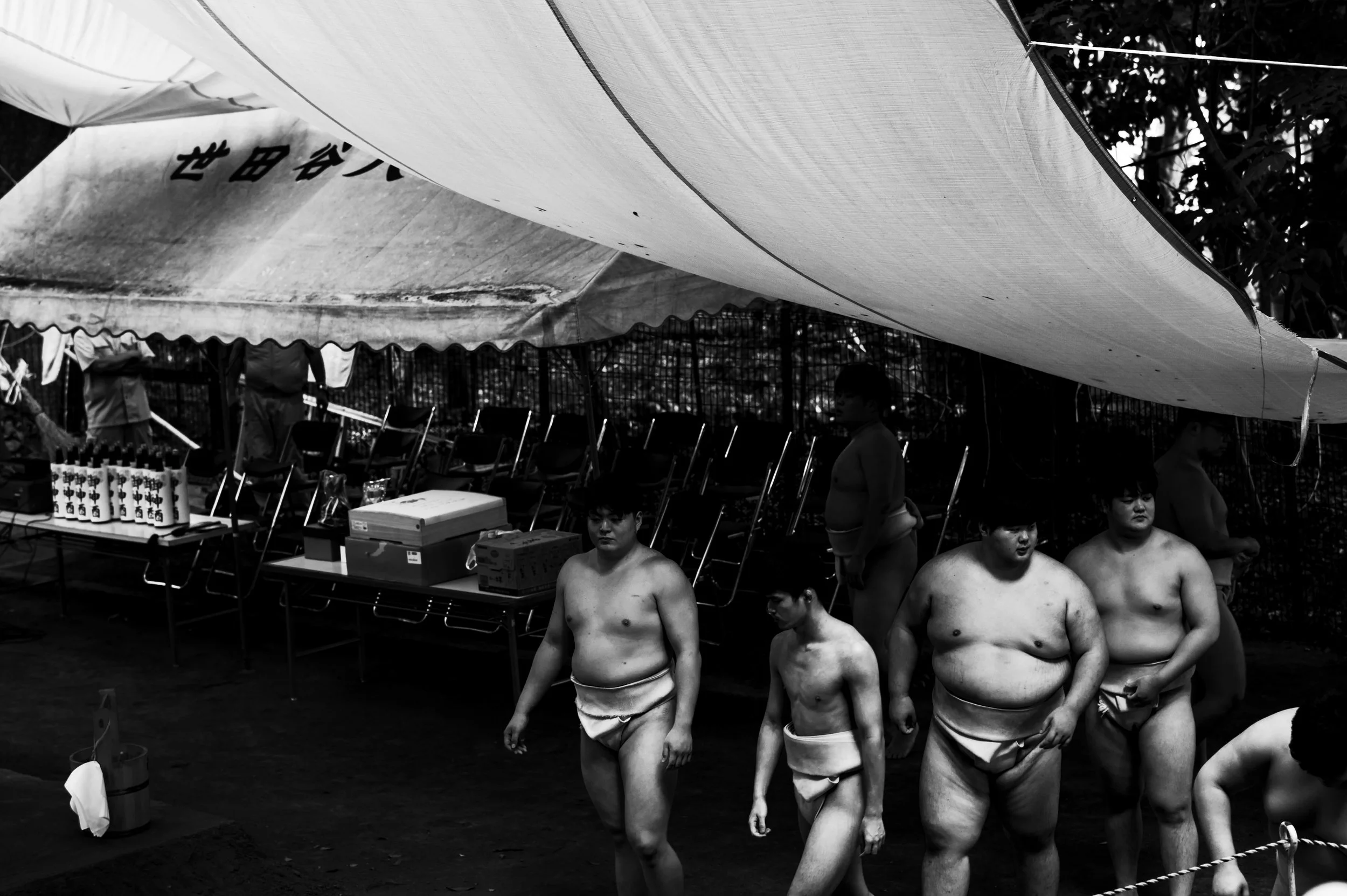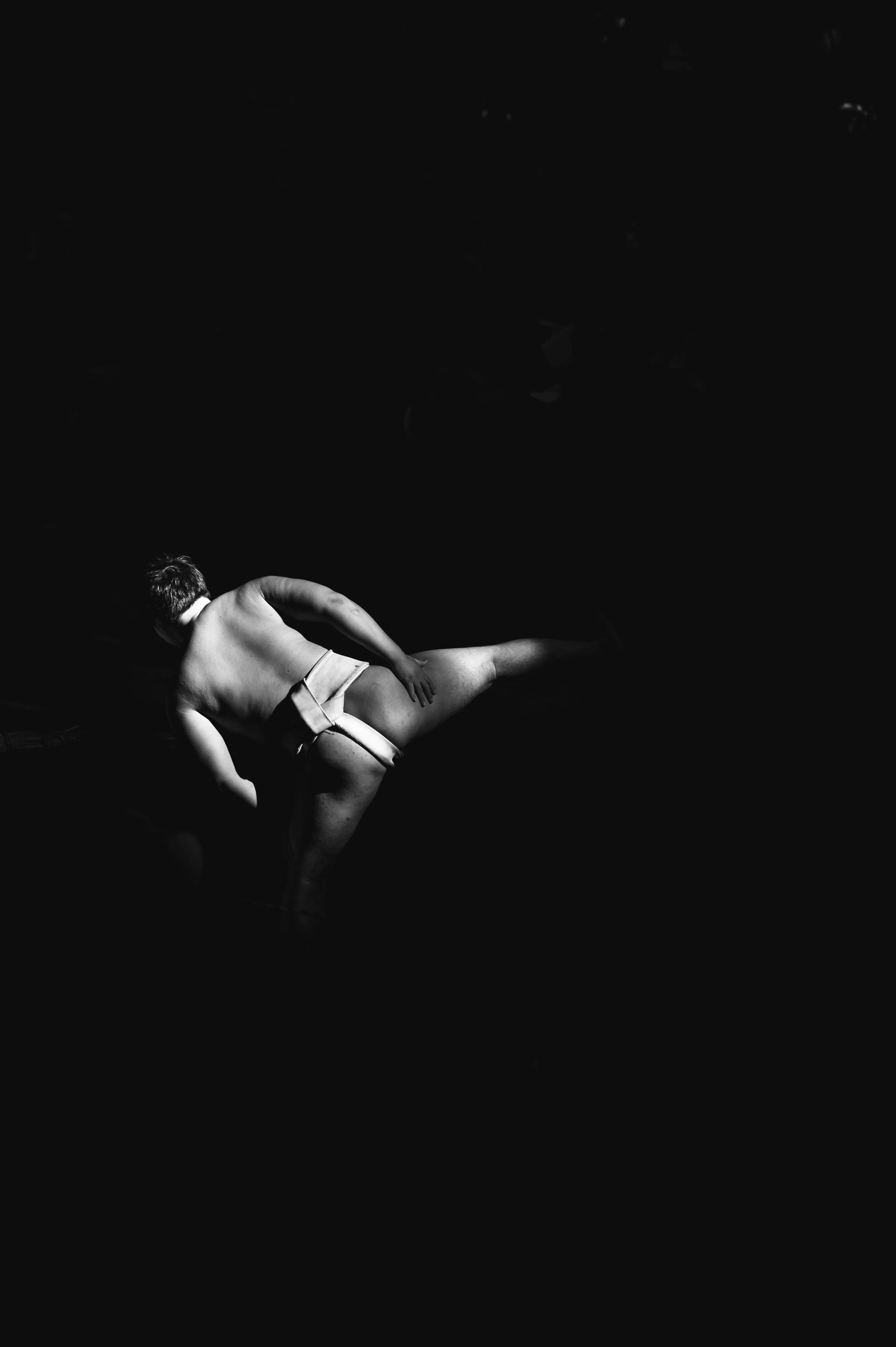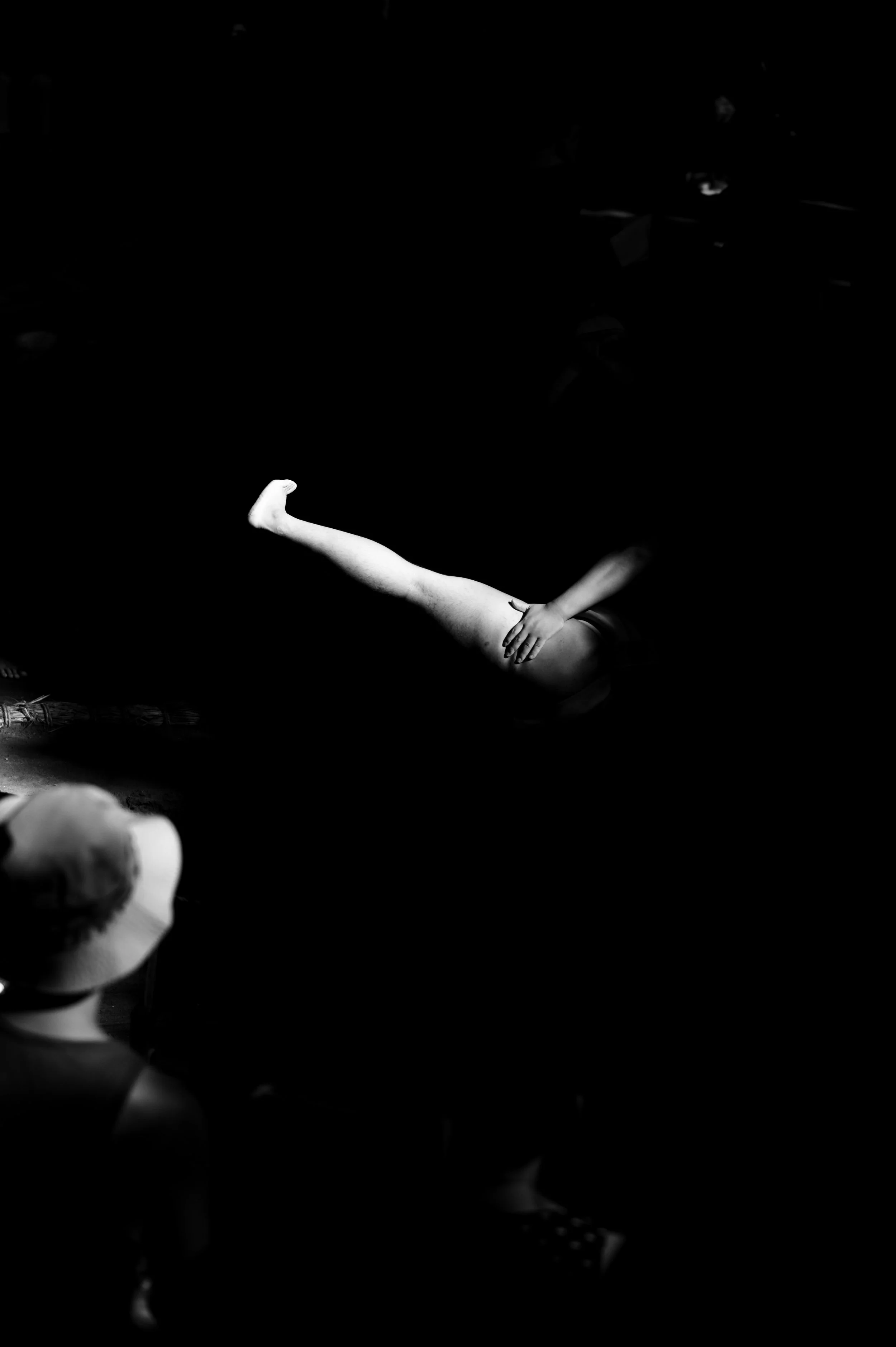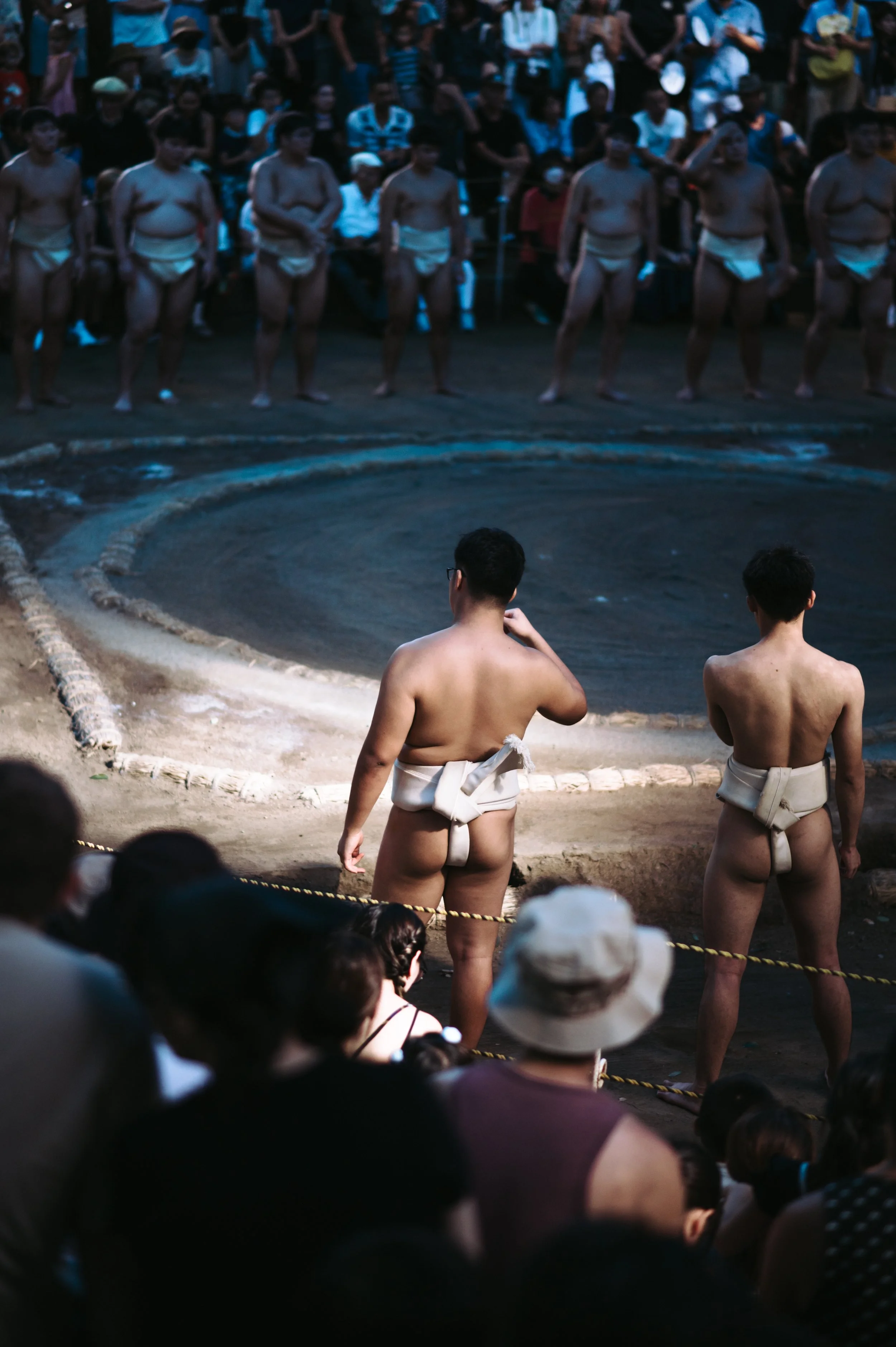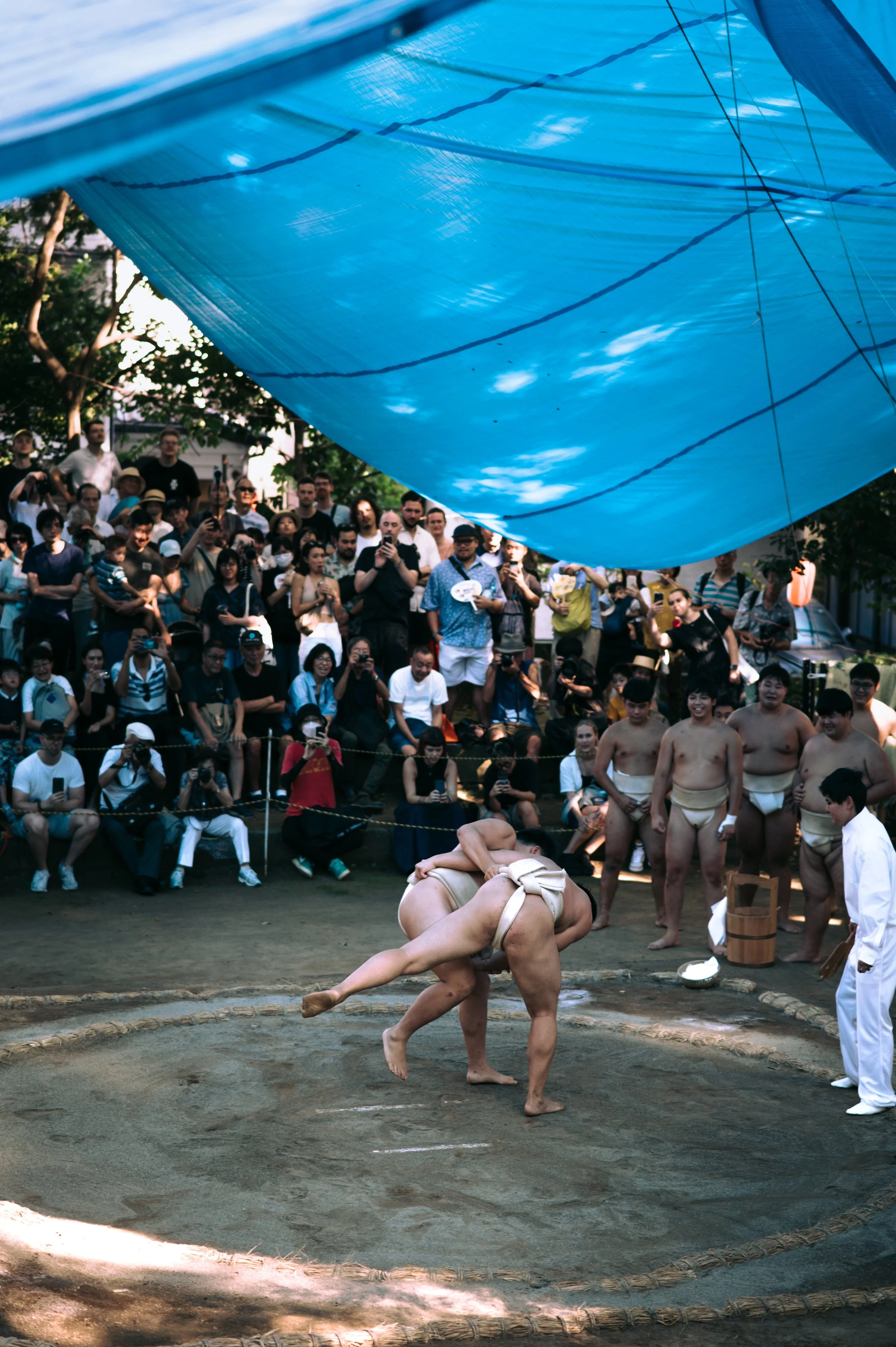Photo Journal: Setagaya Hachimangu Fall Festival
This year I finally visited the annual Setagaya Hachimangu Fall Festival in Miyanosaka! It’s one of Setagaya’s most exciting neighborhood celebrations, blending Shinto traditions with a lively community atmosphere. Held annually in mid-September, the festival is a vibrant showcase of local culture.
I stopped by to photograph the ceremonial sumo wrestling event called Hono-sumo to experience the power and flexibility of these young sumo wrestlers.
What happens at a Japanese summer festival?
Japanese festivals (matsuri 祭り) are common in Tokyo around August and September, so if you’re thinking of attending one, here are some things you can expect to see and do.
Food Stalls (Yatai): Festivals are known for their array of food stalls offering classic Japanese street foods such as takoyaki (octopus balls), yakisoba (fried noodles), taiyaki (fish-shaped pastries), and kakigori (shaved ice with syrup). At Setagaya Hachimangu Fall Festival I couldn’t help myself from trying a “long potato”, a deep-fried potato cut into a spiral, with soy sauce-flavoured salt!
Mikoshi processions: A key highlight of many festivals is the mikoshi procession, where locals carry a portable shrine through the streets
Games and Activities: Try your hand at traditional festival games like kingyo sukui (goldfish scooping), where you use a paper scoop to catch goldfish, or ring toss.
Festival Markets: Browse the stalls selling a variety of goods, including handmade crafts, festival masks, toys, and local specialties. It's a great place to pick up unique souvenirs and support local artisans.
Tips for festival and crowd photography
Summer festivals are dynamic and colourful, so it’s a great opportunity to practice street and documentary photography. Here are three tips to get you started:
Get creative with light: The sunlight on this day was incredibly harsh, and a blue tarpaulin over the sumo ring cast a strong blue shadow. It was difficult lighting to manage. However, I tried to use the harsh sunlight to my advantage by isolating and contrasting the highlights and shadows, allowing me to capture unique photos such as the image with only the sumo wrestler’s foot in the light.
2. Incorporate the crowd: I was positioned in a spot where I couldn’t avoid shooting people in the crowd, both in front of me and behind the sumo wrestlers. I felt that the crowd provided context for the images — the event is certainly a spectacle — so I tried to incorporate the crowd in a subtle way by using a shallow depth of field (wide aperture such as f1.8). This meant that the sumo wrestlers were in focus, and you could still see the crowd, but they were separated from the subject with some blur.
3. Explore both colour and monochrome photography: I generally prefer incorporating colour into my photography, but this event was a great opportunity for me to explore black and white using the contrast between the highlights and shadows.

